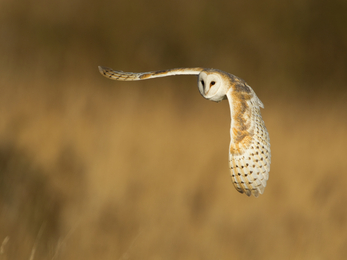From A. A. Milne’s mis-spelled Tawny to a J. K. Rowling’s letter-carrying Snowy, owls have become iconic symbols in British culture. Not only are they frequent flyers in books and films, however – they are a key species within our woodlands and open spaces! As well as being a recognisable part of our countryside, these all-seeing aerial predators are brilliant indicators of small mammal populations. Studying owl pellets for bones and skulls give ecologists an idea of population distribution of shrews, voles and mice. And it’s not just ecologists and bird enthusiasts that love their taloned talents – owls are a massive benefit to the agricultural community too, helping to keep small-mammal damage to crops to a minimum.
Our nature reserves are vital habitats for many of our beloved British owls. From bright-eyed barn owls at Gwaith Powdwr and Cors Goch to secretive short-eared owls at Traeth Glaslyn and Morfa Bychan, these silent flyers are a prominent feature of our landscape. Why not dig out your owl-spotting guides and take a trip into your local reserve to see who you can spot? You could even contribute to some citizen science – head to the BTO website, join in with ‘Project Owl’, and help conservationists make a difference for tawnies. Just remember – whether you’re hunting for little owls at Cemlyn or tawny owls at Coed y Felin, remember that these binocular-eyed birds will likely have spotted you long before you spot them!




